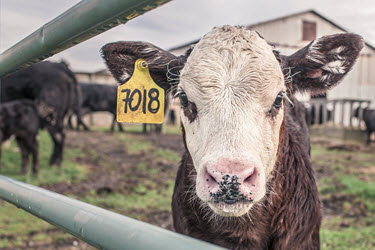THE OPEN
November beans: 2 higher
December meal: .40 lower
December soyoil: 37 higher
December corn: steady
September wheat: 3 lower
Prices opened as expected with a minor bounce in corn met with some early hedge pressure pre-report, as a just-in-case the report was bearish. Wheat prices languished at trading range lows into the report. Grains continued to see pressure into the report. Other key features included a rebound in oilshare off higher palm oil and crude prices. The August report was neutral to bearish for corn and beans, but short-covering was noted after the numbers were released.
The August 12 WASDE was as follows:
Corn 15,278 15,163 15,330 14,815 15,000 13,617
Soybeans 4,425 4,278 4,499 4,150 4,135 3,552
All Wheat 1,838 1,832 1,856 1,795 1,824 1,920
Winter 1,304 1,215 1,232 1,193 1,218 1,304
HRW 695 710 720 700 710 833
SRW 277 279 295 270 280 239
White 274 228 235 224 227 232
Durum 62 57 61 55 56 54
Other 577 560 574 550 550 562
U.S. AVERAGE YIELD (Bushels Per Acre) 2020-21 (WASDE)
Aug Avg High Low Jul 2019-20
Corn 181.8 180.3 182.5 177.5 178.5 167.4
Soybeans 53.3 51.4 53.0 50.0 49.8 47.4
U.S. ENDING STOCKS (Million Bushels) 2019-20
Aug Avg High Low Jul
Corn 2,228 2,263 2,388 2,150 2,248
Soybeans 615 615 640 578 620
Wheat 1,044 1,036 1,045 935 1,044
U.S. ENDING STOCKS (Million Bushels) 2020-21
Aug Average High Low Jul
Corn 2,756 2,795 3,206 2,460 2,648
Soybeans 610 527 689 440 425
Wheat 926 946 976 899 942
WORLD ENDING STOCKS (Million metric tons) 2019-20
Aug Avg High Low Jul
Corn 311.3 312.5 314.0 311.0 311.9
Soybeans 95.9 98.6 100.3 94.8 99.7
Wheat 300.9 296.8 299.2 292.0 297.1
WORLD ENDING STOCKS (million metric tons) 2020-21
Aug Avg. High Low Jul
Corn 317.5 320.4 340.1 312.0 315.0
Soybeans 95.4 98.2 111.7 93.0 95.1
Wheat 316.8 313.5 316.6 308.2 314.8
Beans: Production at 4.42 bln bu would be a record. 19/20 crush was raised 5 mln bu, with exports left unchanged. 20/21 exports were raised from 2,050 mln bu to 2,125 mln bu. with crush raised 20 mln bu to 2,180 mln bu.
Corn: Production at 15.3 bln bu is 12% higher than year ago, with the yield of 181.8 bpa a record. 20/21 ending stocks at 2.76 bln bu were less than the expected 2.8 bln bu. Illinois, Iowa, Indiana, Ohio, and Mo. were forecast to have above average yields from year ago and record high forecasts for Minn. and South Dakota.
Wheat: The more bearish report and reaction as world wheat production was 2 mmt higher than July numbers. The market reaction was more muted here than in beans/corn. 19/20 exports were left unchanged at 965 mln bu, while 20/21 exports were raised from 950 mln bu to 975 mln bu. 19/20 feed and residual was 73 mln bu, down 1 mln bu.
SOY
- The main feature in the soy complex was that of higher oilshare, with soyoil prices rebounding vs. steady to slightly weaker meal. Sep. crush trades to 94.35c/bu while oilshare popped back over 35.0% to trade at 35.33%.
- November bean trade continued in congestion activity into the report, even though more Chinese business was announced. There is further trade chatter that China remains around the bean market, with some interest surfacing for Dec or into Jan. Bean prices continued into the report to remain technically supported above the 100-day moving average of $8.68. Spreads were narrower with Sep/Nov beans trading into 2 1/2c from 3c.
- Meal spreads narrowed as well with Sep/Dec trading into $4.70 from $5.40. The bull feature of the morning was found in Dec soyoil, where prices ran sell-stops under 3050c, but resurrected the upside trend in a well bid market that took prices back over 31c again. After the report was released, prices traded down again into the 100-day moving average for Nov beans at $8.67 but found pricing interest and short-covering activity which ultimately lifted prices back into the green and over the $8.80 level.
- December soyoil prices broke down towards 3090c post numbers but also quickly found short-covering and more fund buying as oilshare still remains a strong feature of trade. Higher oilshare helped to lift bean prices, as traders seemed to be waiting for a bearish report in order to probably price some of the recent business that has been done. All in all, the price action was net positive, even for Dec. meal, which pulled back to test key support at $288.00.
GRAINS
- Grains were mostly on the defensive into the report with short fund positions in each market. KC wheat prices printed double contract lows at $4.10 this week, without much price stabilization. Chicago wheat attempted to trade back over $5.00, but found little incentives as larger global supplies look ahead. Corn futures have attempted to stabilize over the $3.20 level, but found pressure before the report as expectations remain for large yields.
- Bull-spreads remained firm, with Sep/Dec trading into 11 1/2c from 12c lows before the report. Before the WASDE was released, the EIA report was a bit friendly for the ethanol market, with production down 1.4% this week to 918,000 bbls/day, which would utilize 4.9 bln bu of corn.
- Stocks were down 2.9% to 830 mln glns. Although the report was generally bearish in nature, the reaction after the data was released was that of fund short-covering. Surprisingly December corn held the $3.20 level once again, which may suggest that the trend over the next few weeks is likely to be sideways now to a little better.
- Buy corn/sell wheat trade continued to dominate after the numbers were released, with wheat the obvious sell leg of inter-market spread activity. Dec wheat/corn traded from 1.83c down to 1.71 1/2c.
AT 12:00 THE MARKETS ARE AS FOLLOWS:
HI LO
November beans: 3 higher 8.82 1/2 8.67
December meal: .30 lower 290.60 287.00
December soyoil: 72 higher 3140 3029
December corn: 2 higher 3.27 3.20
September wheat: 5 lower 498.00 4.88
November canola: .90 lower 485.90 481.10
OUTSIDE MARKETS
The Dow remained strong, up 220 pts during the trading session, with crude oil prices at midday highs of $42.72/barrel. Big money continues to love the buy energy/sell US dollar trade. Gold prices are steady but only after trading down to $1871.60/oz.
CLOSING COMMENTS
Today was a very interesting technical day of trade with prices holding together better than expected. It feels like this was a relief rally, from those fearing that the downside of these markets may have been much worse. There has been a lot of bean business that was transacted, and therefore seems like buyers were willing to get something priced on a break. Funds also took the chance to cover short corn positions and take a wait and see attitude into the end of August.
If corn seasonally finds its lows around the August report, the inability of Dec. to break $3.20 could suggest that higher prices are ahead. At the very least, we now seem to be in the same trading ranges as before the report, setting up an interruption of the down-trend that preceded the report. A good settlement in corn today will find more shorts electing to get out of the market and take a profit. And while the yields may have been bumped higher, the damage in Iowa inflicted by the storm this week has not been factored into today's price. End of August weather still counts as well.
If short, would probably be heads up and cover something in. This was a very constructive technical trading day. There will be more willing sellers in corn and beans based on these bearish stats, but prices may have to improve further before the US producer becomes engaged.
Have a good evening........
TAGS – Feed Grains, Soy & Oilseeds, Wheat, North America


 Most Apparent Solution The EU’s organic sector wants the bloc’s officials to take more action to ensure they achieve the target of 25 percent of agricultural output being organic by 2030. Specifically, they want a campaign to increase consumer demand for organic food so that organic...
Most Apparent Solution The EU’s organic sector wants the bloc’s officials to take more action to ensure they achieve the target of 25 percent of agricultural output being organic by 2030. Specifically, they want a campaign to increase consumer demand for organic food so that organic...
 Yesterday, the Animal and Plant Health Inspection Service (APHIS) issued a federal order requiring testing and reporting of highly pathogenic avian influenza (HPAI) for the interstate movement of lactating dairy cattle. Specific guidance will be issued at some point today, and the order will go...
Yesterday, the Animal and Plant Health Inspection Service (APHIS) issued a federal order requiring testing and reporting of highly pathogenic avian influenza (HPAI) for the interstate movement of lactating dairy cattle. Specific guidance will be issued at some point today, and the order will go...
 Corn, soybeans and soyoil all closed lower after trading up the previous three sessions. July soymeal made it a fourth trading session higher, and wheat remains on a tear with a fifth trading session closing higher. The mood around wheat sees supply concerns developing in North America and in t...
Corn, soybeans and soyoil all closed lower after trading up the previous three sessions. July soymeal made it a fourth trading session higher, and wheat remains on a tear with a fifth trading session closing higher. The mood around wheat sees supply concerns developing in North America and in t...
 Cow-calf producer margins are discussed less frequently in these pages than their downstream counterparts of feedlot and beef packer margins, but this doesn’t mean they are less important to understanding the beef industry’s current state and outlook. Additionally, discussion of thi...
Cow-calf producer margins are discussed less frequently in these pages than their downstream counterparts of feedlot and beef packer margins, but this doesn’t mean they are less important to understanding the beef industry’s current state and outlook. Additionally, discussion of thi...